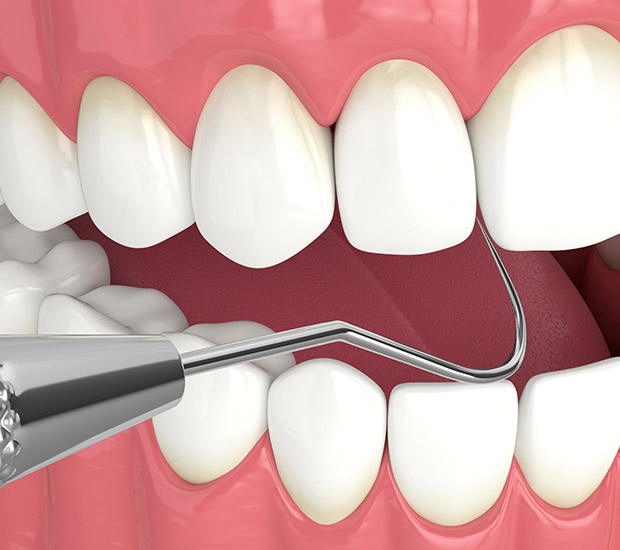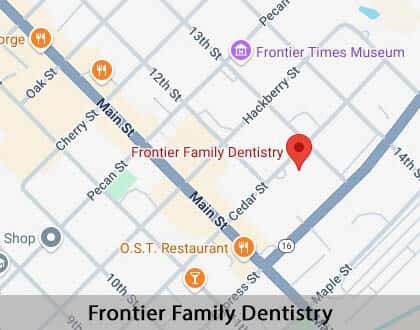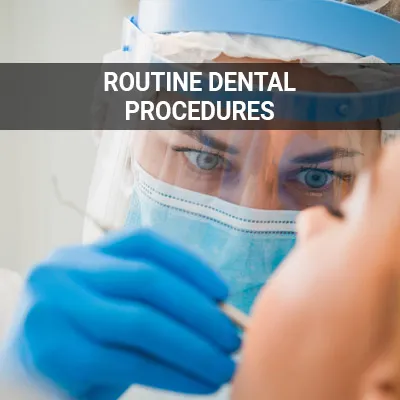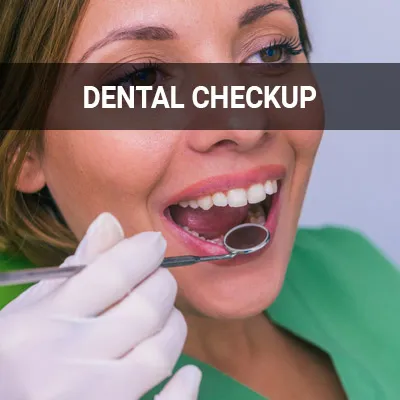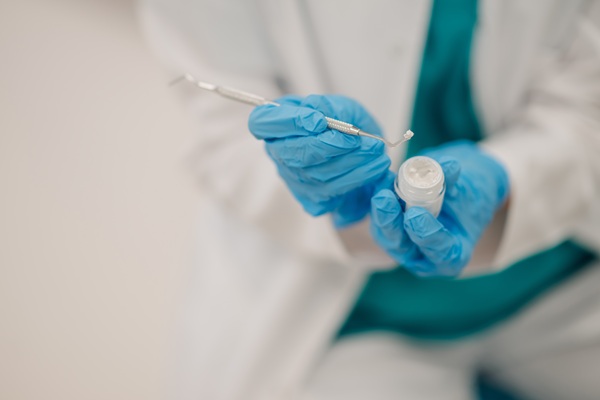Interactive Periodontal Probing Bandera, TX
Interactive periodontal probing is a method used to measure pocket depths around a tooth and establish a patient's state of health. It is also referred to as periodontal testing. Complete health dentists conduct these tests to determine tooth or gum issues as well as underlying health conditions that present themselves through gum health.
Periodontal probing is considered interactive as the dentist and patient both gain an in-depth understanding of each tooth's state and the mouth's overall condition. These insights help the dentist create a complete treatment plan that targets both the patient's oral and systemic health. The test can also diagnose a patient with periodontal disease in its early stages.
Interactive periodontal probing is available at Frontier Family Dentistry in Bandera and the surrounding area. Our staff can help you learn more about the test and answer any questions you have. Call us at (830) 460-3111 to schedule a consultation appointment today.
How Periodontal Test is Performed
Before the periodontal test, the dentist will likely review medical and dental histories, identify any factors contributing to symptoms, and examine the mouth. Returning patients who have undergone their initial consultation and regular checkup will have their record on file and does not need to be reviewed. However, we recommend having a thorough examination of the mouth prior to the periodontal test to check for any abnormalities or easy bleeding.
The test is performed by measuring the pocket depth of the grooves between the gums and teeth. We place a dental probe (a very thin, narrow instrument) beside your tooth beneath your gum line and scan over every tooth. According to the Mayo Clinic, the pocket depth in a healthy mouth is usually between 1 and 3 millimeters (mm). Pockets deeper than 4 mm may indicate periodontitis. It is not easy to clean pockets deeper than 5 mm, so we will go over possible options during the appointment. We will record these numbers on a periodontal chart.
“Pockets deeper than 4 mm may indicate periodontitis.”
Periodontal Charting and What It Reveals
Periodontal charting is the portion of a dental record that tracks oral health over time. It includes a patient's recorded pocket depths, as well as signs of receding or bleeding gums, and a recording of where a patient's teeth attach to the gums.
Periodontal charting also records cavities, missing or rotated teeth, and the health of tooth enamel. The chart should also record tooth movement or damage, as well as any fillings, crowns, implants, or bridges in the mouth. At every visit, the dentist will update a patient's periodontal chart to determine the current state of that patient's oral health. This will help patients identify any warning signs that gum disease may be progressing.
“Periodontal charting is the portion of a dental record that tracks oral health over time.”
Risk Assessment That Dentist Makes
Periodontal probing and charting allow dentists to assess a patient's risk of acquiring periodontal disease as well as other oral and systemic diseases. A Journal of Periodontology study on risk factors explains: "risk factors may be broadly categorized as: Systemic risk factors - factors that affect the host response to the plaque biofilm, upsetting the host-microbial balance; and Local risk factors - factors local to the oral cavity, which may influence plaque accumulation or occlusal forces." A periodontal chart reveals which factors are in play and their causes.
Risk assessments classify risks in terms of risk factors, risk indicators, and risk predictors. Risk factors include age, tobacco use, diabetes, stress, genetics, pregnancy, cardiovascular diseases, and poor oral hygiene. Risk indicators indicate whether visible risk factors, such as the presence of herpes viruses in subgingival plaque, are cause of an oral or systemic condition. Risk predictors are factors that have no current biological causing agent but have been associated with disease. For example, the number of missing teeth is a risk predictor for disease but may not indicate current periodontitis.
“A periodontal chart reveals which factors are in play and their causes.”
Check out what others are saying about our dental services on Yelp: Interactive Periodontal Probing in Bandera, TX
Candidates for Periodontal Testing
Current guidelines suggest all adults should receive a comprehensive periodontal evaluation, or CPE, each year. In addition to interactive periodontal probing, dentists should examine teeth, bite, tongue, gums, and lifestyle factors that could contribute to periodontal risks.
If risk assessments suggest a patient's risk is high, you may need more than one periodontal probe each year. Any of these factors could indicate the need for more frequent testing:
- Gingivitis
- Frequent cavities
- Smoking or vaping
- Pregnancy
- Menopause
- Obesity
- Medications that change your oral health
- Decreased immunity
- Diabetes, rheumatoid arthritis, and Crohn’s disease
“All adults should receive a comprehensive periodontal evaluation, or CPE, each year.”
Questions Answered on This Page
Q. How is the periodontal test performed?
Q. What is a risk assessment and what does it show?
Q. What does periodontal charting reveal?
Q. Who are candidates for periodontal testing?
People Also Ask
Q. What should a home oral care routine include?
Q. Why is it important to find the right general dentist?
Q. What are common signs of gum disease?
Frequently Asked Questions About Interactive Periodontal Probing
Q. When should I receive periodontal probing?
A. The answer depends on the patient. Current guidelines suggest healthy adults receive annual periodontal probing to reduce the risk of gum disease. Patients whose dentists identified higher risk assessment factors may need more frequent periodontal probing to prevent oral health complications.
Q. Will periodontal probing hurt?
A. If you already have periodontal disease, you may experience slight discomfort during periodontal probing. However, little pain is reported during the procedure. If you are concerned about the procedure, you may talk to your dentist about topical numbing creams.
Q. Does periodontal probing make gums bleed?
A. This procedure is designed to check the health of your gums and assess risk factors, including bleeding gums. If your gums bleed during periodontal probing, it is likely a sign that their health is compromised. Bleeding gums are rarely due to probing alone.
Q. What do I do if I have a high risk for periodontal disease?
A. If periodontal probing reveals that you have pockets over 4 mm, you may need frequent in-office cleanings. At this stage, at-home oral hygiene will be difficult. Your dentist can offer specific recommendations but will likely recommend visits every three to six months to prevent disease progression or tooth decay.
Q. What impact can periodontal disease have on my overall health?
A. It is important to work to prevent and treat periodontal disease. Studies have shown gum disease may increase one's risk of other health problems such as high blood pressure, diabetes, and stroke. Some studies even link periodontal disease to cancer, dementia, arthritis, and kidney disease.
Dental Terminology
Call Us Today
If you are looking for more information pertaining to periodontal probing or testing, call us today at 830-460-3111 to learn more or make an appointment.
Helpful Related Links
- American Dental Association (ADA). Glossary of Dental Clinical Terms. 2025
About our business and website security
- Frontier Family Dentistry was established in 2015.
- We accept the following payment methods: American Express, Cash, Check, Discover, MasterCard, and Visa
- We serve patients from the following counties: Bandera County, Kerr County, Kendall County and Bexar County
- We serve patients from the following cities: Bandera, Medina, Kerrville, Pipe Creek, Lakehills, Tarpley, Boerne, Vanderpool, Comfort and San Antonio
- Norton Safe Web. View Details
- Trend Micro Site Safety Center. View Details
Back to top of Interactive Periodontal Probing
